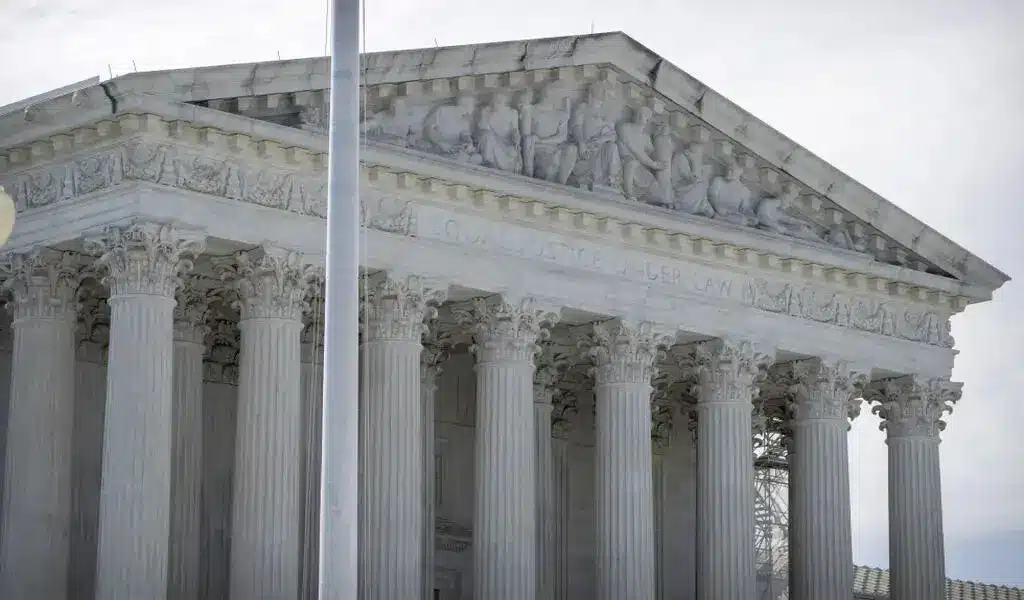News
Tackling Hydropower Myths on the Mekong: “Run-of-River” Does Not Mean Sustainable
BANGKOK– A few weeks ago, the 3rd Mekong River Commission Summit took place in Siem Reap, Cambodia. The Summit is held every four years, bringing together the leaders of the Lower Mekong member countries: Cambodia, Lao PDR, Thailand and Vietnam, together with representatives of China and Myanmar as MRC dialogue partners. The MRC describes the Summit as an opportunity for political leaders to address “prevailing challenges and opportunities” facing the Mekong Basin.
To say that the challenges are considerable would be an understatement. With two of 11 planned hydropower dams under construction on the Mekong mainstream, and many more coming online on important tributaries, the Mekong faces an unprecedented ecological threat. Multiple studies, including the MRC’s own recently-released Council Study, warn of extremely severe impacts and trade-offs in the current plans for hydropower expansion. Fisheries, sediment flows, and other ecosystem services will experience substantial transboundary losses – and these impacts will only be exacerbated by climate change.
Despite the warnings, dam proponents continue to downplay the impacts of dams in the Lower Mekong Basin, asserting that these “run-of-river” (ROR) projects can be built “sustainably” with limited impacts or that impacts can be minimized. This argument relies on largely blind faith in the effectiveness of impact mitigation technologies, such as fish passages, ‘fish-friendly’ turbines and sediment flushing facilities, which are yet to be adequately tested or proven effective in the context of the Mekong. The argument also links to a broader discourse of so-called “sustainable hydropower” that is increasingly prominent in lower Mekong countries, but is not borne out by documented experience from existing projects in the Lower Mekong Basin.
The term “run-of-river” is itself often used in misleading ways. Although there’s no clear definition of ROR, the term typically refers to dams that have limited storage capacity. Developers have tended to overlook and understudy the impacts of ROR dams, in part because – in the absence of any clear or meaningful definition of the term – they simply assume that ROR projects are less harmful than traditional dams.
In fact, ROR projects can have equally serious impacts, particularly on ecosystems and communities downstream, even without large reservoirs. Some of these impacts are inherent; others depend on how a dam is operated. ROR dams alter seasonal flow patterns, increasing water levels during the dry season and decreasing them during the wet season, with profound implications for downstream ecosystems and agricultural systems that are built around the seasonal flood pulse.
International Rivers’ newest fact sheet looks at the term ROR as it is applied to different types of hydropower projects in the Mekong. We find that:
- While there’s no single definition of ROR, it’s usually applied to hydropower projects that have either a small reservoir or no reservoir. ROR projects do differ from traditional storage dams, which store large quantities of water in the wet season to allow year-round releases to generate power. However, many ROR projects in the Mekong Basin do store water, and some can in fact store water for weeks or even months.
- The 11 dams planned and under construction on the lower Mekong River mainstream are classified as ROR projects. However, the storage capacities, reservoir sizes and operational strategies of these projects differ greatly. Some of the Mekong mainstream dams have the capacity to retain flows for two to three weeks during an average dry season, and one to two weeks during an average wet season. Some of the projects will have very large reservoirs, submerging large areas of land and displacing thousands of people.
- ROR dams with storage, or “pondage,” can be operated to produce “peaking power.” These projects can time releases and generate power for those hours or days when energy demand is “peaking.” By releasing an entire day’s worth of flows within the span of a few hours, they create daily fluctuations between flood and drought that can wash away or disrupt fish breeding grounds and aquatic biota that are critical to the food chain. Projects operated in this manner create the opposite of a river’s natural flow. Peaking plants can also pose a significant safety risk to people living downstream, who can be exposed to unexpected dam releases.
- ROR projects often have significant impacts on fish and other aquatic species. They block the upstream and downstream migration of fish and other biota, and prevent sediment and nutrients from flowing to floodplains downstream. They often inundate important biodiversity hotspots, which tend to occur near the rapids that attract dam developers.
- ROR projects are often built in a cascade, as the construction of the first dam on a river regulates its flow, making the development of subsequent projects downstream more economical. Cascades can pose impenetrable barriers to migratory fish and exacerbate impacts on riverine ecology. Cascades also have a more pronounced effect on blocking sediment from traveling downstream, impacting both dam operation and, most critically, the ecosystems and fertility of floodplains downstream. The cumulative impacts of dam cascades on river health cannot be measured by examining each project individually, as such projects can condemn a river to “death by a thousand cuts.”
Terms such as “run-of-river” and “sustainable hydropower” tend to minimize and conceal the very real impacts of the current and proposed Mekong mainstream dams. It is critical that Lower Mekong governments acknowledge the severity of the threats facing the Mekong basin due to hydropower construction rather than downplaying or understating them.
In assessing the cumulative impacts of hydropower developing on the basin, the MRC Council Study is a step towards ensuring that decisions made adequately address these threats. Among its key findings and recommendations, the MRC Council Study “strongly recommends” that governments consider renewable power technologies as increasingly viable alternatives to proposed hydropower development.
If the Mekong River and the people of the Mekong Basin are to have a truly sustainable future, the lower Mekong governments must seriously heed this advice. We are therefore urging lower Mekong leaders to support a moratorium on further hydropower construction until a regional study of renewable energy technologies and alternatives is completed.
By Maureen Harris – International Rivers
Read fact sheet, “Swindling the Mekong: Run-of-River Hydro.”

News
Google’s Search Dominance Is Unwinding, But Still Accounting 48% Search Revenue

Google is so closely associated with its key product that its name is a verb that signifies “search.” However, Google’s dominance in that sector is dwindling.
According to eMarketer, Google will lose control of the US search industry for the first time in decades next year.
Google will remain the dominant search player, accounting for 48% of American search advertising revenue. And, remarkably, Google is still increasing its sales in the field, despite being the dominating player in search since the early days of the George W. Bush administration. However, Amazon is growing at a quicker rate.
Google’s Search Dominance Is Unwinding
Amazon will hold over a quarter of US search ad dollars next year, rising to 27% by 2026, while Google will fall even more, according to eMarketer.
The Wall Street Journal was first to report on the forecast.
Lest you think you’ll have to switch to Bing or Yahoo, this isn’t the end of Google or anything really near.
Google is the fourth-most valued public firm in the world. Its market worth is $2.1 trillion, trailing just Apple, Microsoft, and the AI chip darling Nvidia. It also maintains its dominance in other industries, such as display advertisements, where it dominates alongside Facebook’s parent firm Meta, and video ads on YouTube.
To put those “other” firms in context, each is worth more than Delta Air Lines’ total market value. So, yeah, Google is not going anywhere.
Nonetheless, Google faces numerous dangers to its operations, particularly from antitrust regulators.
On Monday, a federal judge in San Francisco ruled that Google must open up its Google Play Store to competitors, dealing a significant blow to the firm in its long-running battle with Fortnite creator Epic Games. Google announced that it would appeal the verdict.
In August, a federal judge ruled that Google has an illegal monopoly on search. That verdict could lead to the dissolution of the company’s search operation. Another antitrust lawsuit filed last month accuses Google of abusing its dominance in the online advertising business.
Meanwhile, European regulators have compelled Google to follow tough new standards, which have resulted in multiple $1 billion-plus fines.

Pixa Bay
Google’s Search Dominance Is Unwinding
On top of that, the marketplace is becoming more difficult on its own.
TikTok, the fastest-growing social network, is expanding into the search market. And Amazon has accomplished something few other digital titans have done to date: it has established a habit.
When you want to buy anything, you usually go to Amazon, not Google. Amazon then buys adverts to push companies’ products to the top of your search results, increasing sales and earning Amazon a greater portion of the revenue. According to eMarketer, it is expected to generate $27.8 billion in search revenue in the United States next year, trailing only Google’s $62.9 billion total.
And then there’s AI, the technology that (supposedly) will change everything.
Why search in stilted language for “kendall jenner why bad bunny breakup” or “police moving violation driver rights no stop sign” when you can just ask OpenAI’s ChatGPT, “What’s going on with Kendall Jenner and Bad Bunny?” in “I need help fighting a moving violation involving a stop sign that wasn’t visible.” Google is working on exactly this technology with its Gemini product, but its success is far from guaranteed, especially with Apple collaborating with OpenAI and other businesses rapidly joining the market.
A Google spokeswoman referred to a blog post from last week in which the company unveiled ads in its AI overviews (the AI-generated text that appears at the top of search results). It’s Google’s way of expressing its ability to profit on a changing marketplace while retaining its business, even as its consumers steadily transition to ask-and-answer AI and away from search.

Google has long used a single catchphrase to defend itself against opponents who claim it is a monopoly abusing its power: competition is only a click away. Until recently, that seemed comically obtuse. Really? We are going to switch to Bing? Or Duck Duck Go? Give me a break.
But today, it feels more like reality.
Google is in no danger of disappearing. However, every highly dominating company faces some type of reckoning over time. GE, a Dow mainstay for more than a century, was broken up last year and is now a shell of its previous dominance. Sears declared bankruptcy in 2022 and is virtually out of business. US Steel, long the foundation of American manufacturing, is attempting to sell itself to a Japanese corporation.
SOURCE | CNN
News
2024 | Supreme Court Won’t Hear Appeal From Elon Musk’s X Platform Over Warrant In Trump Case

Washington — Trump Media, The Supreme Court announced Monday that it will not hear an appeal from social media platform X about a search warrant acquired by prosecutors in the election meddling case against former President Donald Trump.
The justices did not explain their rationale, and there were no recorded dissents.
The firm, which was known as Twitter before being purchased by billionaire Elon Musk, claims a nondisclosure order that prevented it from informing Trump about the warrant obtained by special counsel Jack Smith’s team violated its First Amendment rights.
The business also claims Trump should have had an opportunity to exercise executive privilege. If not reined in, the government may employ similar tactics to intercept additional privileged communications, their lawyers contended.
Supreme Court Won’t Hear Appeal From Elon Musk’s X Platform Over Warrant In Trump Case
Two neutral electronic privacy groups also joined in, urging the high court to hear the case on First Amendment grounds.
Prosecutors, however, claim that the corporation never shown that Trump utilized the account for official purposes, therefore executive privilege is not a problem. A lower court also determined that informing Trump could have compromised the current probe.

Trump utilized his Twitter account in the weeks preceding up to his supporters’ attack on the Capitol on January 6, 2021, to spread false assertions about the election, which prosecutors claim were intended to create doubt in the democratic process.
The indictment describes how Trump used his Twitter account to encourage his followers to travel to Washington on Jan. 6, pressuring Vice President Mike Pence to reject the certification, and falsely claiming that the Capitol crowd, which battered police officers and destroyed glass, was peaceful.
Supreme Court Won’t Hear Appeal From Elon Musk’s X Platform Over Warrant In Trump Case
That case is now moving forward following the Supreme Court’s verdict in July, which granted Trump full immunity from criminal prosecution as a former president.
The warrant arrived at Twitter amid quick changes implemented by Musk, who bought the company in 2022 and has since cut off most of its workforce, including those dedicated to combating disinformation and hate speech.
SOURCE | AP
News
The Supreme Court Turns Down Biden’s Government Appeal in a Texas Emergency Abortion Matter.

(VOR News) – A ruling that prohibits emergency abortions that contravene the Supreme Court law in the state of Texas, which has one of the most stringent abortion restrictions in the country, has been upheld by the Supreme Court of the United States. The United States Supreme Court upheld this decision.
The justices did not provide any specifics regarding the underlying reasons for their decision to uphold an order from a lower court that declared hospitals cannot be legally obligated to administer abortions if doing so would violate the law in the state of Texas.
Institutions are not required to perform abortions, as stipulated in the decree. The common populace did not investigate any opposing viewpoints. The decision was made just weeks before a presidential election that brought abortion to the forefront of the political agenda.
This decision follows the 2022 Supreme Court ruling that ended abortion nationwide.
In response to a request from the administration of Vice President Joe Biden to overturn the lower court’s decision, the justices expressed their disapproval.
The government contends that hospitals are obligated to perform abortions in compliance with federal legislation when the health or life of an expectant patient is in an exceedingly precarious condition.
This is the case in regions where the procedure is prohibited. The difficulty hospitals in Texas and other states are experiencing in determining whether or not routine care could be in violation of stringent state laws that prohibit abortion has resulted in an increase in the number of complaints concerning pregnant women who are experiencing medical distress being turned away from emergency rooms.
The administration cited the Supreme Court’s ruling in a case that bore a striking resemblance to the one that was presented to it in Idaho at the beginning of the year. The justices took a limited decision in that case to allow the continuation of emergency abortions without interruption while a lawsuit was still being heard.
In contrast, Texas has been a vocal proponent of the injunction’s continued enforcement. Texas has argued that its circumstances are distinct from those of Idaho, as the state does have an exemption for situations that pose a significant hazard to the health of an expectant patient.
According to the state, the discrepancy is the result of this exemption. The state of Idaho had a provision that safeguarded a woman’s life when the issue was first broached; however, it did not include protection for her health.
Certified medical practitioners are not obligated to wait until a woman’s life is in imminent peril before they are legally permitted to perform an abortion, as determined by the state supreme court.
The state of Texas highlighted this to the Supreme Court.
Nevertheless, medical professionals have criticized the Texas statute as being perilously ambiguous, and a medical board has declined to provide a list of all the disorders that are eligible for an exception. Furthermore, the statute has been criticized for its hazardous ambiguity.
For an extended period, termination of pregnancies has been a standard procedure in medical treatment for individuals who have been experiencing significant issues. It is implemented in this manner to prevent catastrophic outcomes, such as sepsis, organ failure, and other severe scenarios.
Nevertheless, medical professionals and hospitals in Texas and other states with strict abortion laws have noted that it is uncertain whether or not these terminations could be in violation of abortion prohibitions that include the possibility of a prison sentence. This is the case in regions where abortion prohibitions are exceedingly restrictive.
Following the Supreme Court’s decision to overturn Roe v. Wade, which resulted in restrictions on the rights of women to have abortions in several Republican-ruled states, the Texas case was revisited in 2022.
As per the orders that were disclosed by the administration of Vice President Joe Biden, hospitals are still required to provide abortions in cases that are classified as dire emergency.
As stipulated in a piece of health care legislation, the majority of hospitals are obligated to provide medical assistance to patients who are experiencing medical distress. This is in accordance with the law.
The state of Texas maintained that hospitals should not be obligated to provide abortions throughout the litigation, as doing so would violate the state’s constitutional prohibition on abortions. In its January judgment, the 5th United States Circuit Court of Appeals concurred with the state and acknowledged that the administration had exceeded its authority.
SOURCE: AP
SEE ALSO:
Could Last-Minute Surprises Derail Kamala Harris’ Campaign? “Nostradamus” Explains the US Poll.
-

 News4 years ago
News4 years agoLet’s Know About Ultra High Net Worth Individual
-
Entertainment2 years ago
Mabelle Prior: The Voice of Hope, Resilience, and Diversity Inspiring Generations
-
News11 years ago
Enviromental Groups Tell Mekong Leaders Lao Dam Evaluation Process Flawed
-

 Health4 years ago
Health4 years agoHow Much Ivermectin Should You Take?
-

 Tech3 years ago
Tech3 years agoTop Forex Brokers of 2023: Reviews and Analysis for Successful Trading
-

 Lifestyles3 years ago
Lifestyles3 years agoAries Soulmate Signs
-

 Entertainment3 years ago
Entertainment3 years agoWhat Should I Do If Disney Plus Keeps Logging Me Out of TV?
-

 Health3 years ago
Health3 years agoCan I Buy Ivermectin Without A Prescription in the USA?


